
Just when all my childhood dreams seemed to have come true, I nearly lost my mind and then my life. I’ve never told this story publicly, but now it’s time.
It was the beginning of 2011. I had just finished filming the first season of “Game of Thrones,” a new HBO series based on George R. R. Martin’s “A Song of Ice and Fire” novels. With almost no professional experience behind me, I’d been given the role of Daenerys Targaryen, also known as Khaleesi of the Great Grass Sea, Lady of Dragonstone, Breaker of Chains, Mother of Dragons. As a young princess, Daenerys is sold in marriage to a musclebound Dothraki warlord named Khal Drogo. It’s a long story—eight seasons long—but suffice to say that she grows in stature and in strength. She becomes a figure of power and self-possession. Before long, young girls would dress in platinum wigs and flowing robes to be Daenerys Targaryen for Halloween.
The show’s creators, David Benioff and D. B. Weiss, have said that my character is a blend of Napoleon, Joan of Arc, and Lawrence of Arabia. And yet, in the weeks after we finished shooting the first season, despite all the looming excitement of a publicity campaign and the series première, I hardly felt like a conquering spirit. I was terrified. Terrified of the attention, terrified of a business I barely understood, terrified of trying to make good on the faith that the creators of “Thrones” had put in me. I felt, in every way, exposed. In the very first episode, I appeared naked, and, from that first press junket onward, I always got the same question: some variation of “You play such a strong woman, and yet you take off your clothes. Why?” In my head, I’d respond, “How many men do I need to kill to prove myself?”
To relieve the stress, I worked out with a trainer. I was a television actor now, after all, and that is what television actors do. We work out. On the morning of February 11, 2011, I was getting dressed in the locker room of a gym in Crouch End, North London, when I started to feel a bad headache coming on. I was so fatigued that I could barely put on my sneakers. When I started my workout, I had to force myself through the first few exercises.
Then my trainer had me get into the plank position, and I immediately felt as though an elastic band were squeezing my brain. I tried to ignore the pain and push through it, but I just couldn’t. I told my trainer I had to take a break. Somehow, almost crawling, I made it to the locker room. I reached the toilet, sank to my knees, and proceeded to be violently, voluminously ill. Meanwhile, the pain—shooting, stabbing, constricting pain—was getting worse. At some level, I knew what was happening: my brain was damaged.
For a few moments, I tried to will away the pain and the nausea. I said to myself, “I will not be paralyzed.” I moved my fingers and toes to make sure that was true. To keep my memory alive, I tried to recall, among other things, some lines from “Game of Thrones.”
I heard a woman’s voice coming from the next stall, asking me if I was O.K. No, I wasn’t. She came to help me and maneuvered me onto my side, in the recovery position. Then everything became, at once, noisy and blurry. I remember the sound of a siren, an ambulance; I heard new voices, someone saying that my pulse was weak. I was throwing up bile. Someone found my phone and called my parents, who live in Oxfordshire, and they were told to meet me at the emergency room of Whittington Hospital.
A fog of unconsciousness settled over me. From an ambulance, I was wheeled on a gurney into a corridor filled with the smell of disinfectant and the noises of people in distress. Because no one knew what was wrong with me, the doctors and nurses could not give me any drugs to ease the pain.
Finally, I was sent for an MRI, a brain scan. The diagnosis was quick and ominous: a subarachnoid hemorrhage (SAH), a life-threatening type of stroke, caused by bleeding into the space surrounding the brain. I’d had an aneurysm, an arterial rupture. As I later learned, about a third of SAH patients die immediately or soon thereafter. For the patients who do survive, urgent treatment is required to seal off the aneurysm, as there is a very high risk of a second, often fatal bleed. If I was to live and avoid terrible deficits, I would have to have urgent surgery. And, even then, there were no guarantees.
I was taken by ambulance to the National Hospital for Neurology and Neurosurgery, a beautiful redbrick Victorian pile in central London. It was nighttime. My mum slept in my hospital ward, slumped in a chair, as I kept falling in and out of sleep, in a state of drugged wooziness, shooting pain, and persistent nightmares.
I remember being told that I should sign a release form for surgery. Brain surgery? I was in the middle of my very busy life—I had no time for brain surgery. But, finally, I settled down and signed. And then I was unconscious. For the next three hours, surgeons went about repairing my brain. This would not be my last surgery, and it would not be the worst. I was twenty-four years old.
Listen: David Remnick interviews Emilia Clarke on The New Yorker Radio Hour.
I grew up in Oxford and rarely gave a thought to my health. Nearly all I thought about was acting. My dad was a sound designer. He worked on productions of “West Side Story” and “Chicago” in the West End. My mother was, and is, a businesswoman, the vice-president of marketing for a global management consultancy. We weren’t wealthy, but my brother and I went to private schools. Our parents, who wanted everything for us, struggled to keep up with the fees.
I have no clear memory of when I first decided to be an actor. I’m told I was around three or four. When I went with my dad to theatres, I was entranced by backstage life: the gossip, the props, the costumes, all the urgent and whispered hubbub in the near darkness. When I was three, my father took me to see a production of “Show Boat.” Although I was ordinarily a loud and antsy child, I sat silent and rapt in the audience for more than two hours. When the curtain came down, I stood on my seat and clapped wildly over my head.
I was hooked. At home, I played a VHS tape of “My Fair Lady” so many times that it snapped from wear. I think I took the Pygmalion story as a sign of how, and with enough rehearsal and a good director, you can become someone else. I don’t think my dad was pleased when I announced that I wanted to be an actor. He knew plenty of actors and, to his mind, they were habitually neurotic and unemployed.
My school, in Oxford, the Squirrel School, was idyllic, orderly, and sweet. When I was five, I got the lead part in a play. When it came time to take the stage and deliver my lines, though, I forgot everything. I just stood there, center stage, stock-still, taking it all in. In the front row, the teachers were trying to help by mouthing my lines. But I just stood there, with no fear, very calm. It’s a state of mind that has carried me throughout my career. These days, I can be on a red carpet with a thousand cameras clicking away and I’m unfazed. Of course, put me at a dinner party with six people and that’s another matter.
With time, I got better at acting. I even remembered my lines. But I was hardly a prodigy. When I was ten, my dad took me to an audition in the West End for a production of Neil Simon’s “The Goodbye Girl.” When I got inside, I realized that every girl trying out for this part was singing a song from “Cats.” The only thing I could come up with was an English folk song, “Donkey Riding.” After listening rather patiently, someone asked, “How about something more . . . contemporary?” I sang the Spice Girls hit “Wannabe.” My dad’s hands practically covered his face. I didn’t get the part, and I think it was a blessing. My dad said, “It would have been hard reading anything bad about you in the paper.”
But I kept at it. In school productions, I played Anita in “West Side Story,” Abigail in “The Crucible,” one of the witches in “Macbeth,” Viola in “Twelfth Night.” After secondary school, I took a gap year, during which I worked as a waitress and went backpacking in Asia. Then I started classes at the Drama Centre London to pursue my B.A. As fledgling actors, we studied everything from “The Cherry Orchard” to “The Wire.” I didn’t get the ingénue parts. Those went to the tall, willowy, impossibly blond girls. I got cast as a Jewish mother in “Awake and Sing!” You should hear my Bronx accent.
After graduation, I made myself a promise: for one year, I would take only roles with some promise. I made the rent working in a pub, in a call center, and at an obscure museum, telling people that “the loos are just to the right.” Seconds lasted days. But I was determined: one year of no bad productions, no plays above a bar.
Read: More from The New Yorker on “Game of Thrones.”
In the spring of 2010, my agent called to say that auditions were being held in London for a new HBO series. The pilot for “Game of Thrones” had been flawed and they wanted to re-cast, among other roles, Daenerys. The part called for an otherworldly, bleached-blond woman of mystery. I’m a short, dark-haired, curvy Brit. Whatever. To prepare, I learned these very strange lines for two scenes, one in Episode 4, in which my brother goes to hit me, and one in Episode 10, in which I walk into a fire and survive, unscathed.
In those days, I thought of myself as healthy. Sometimes I got a little light-headed, because I often had low blood pressure and a low heart rate. Once in a while, I’d get dizzy and pass out. When I was fourteen, I had a migraine that kept me in bed for a couple of days, and in drama school I’d collapse once in a while. But it all seemed manageable, part of the stress of being an actor and of life in general. Now I think that I might have been experiencing warning signs of what was to come.
I read for “Game of Thrones” in a tiny studio in Soho. Four days later, I got a call. Apparently, the audition hadn’t been a disaster. I was told to fly to Los Angeles in three weeks and read for Benioff and Weiss and the network executives. I started working out intensely to prepare. They flew me business class. I stole all the free tea from the lounge. At the audition, I tried not to look when I spotted another actor––tall, blond, willowy, beautiful––walking by. I read two scenes in a dark auditorium, for an audience of producers and executives. When it was over, I blurted out, “Can I do anything else?”
David Benioff said, “You can do a dance.” Never wanting to disappoint, I did the funky chicken and the robot. In retrospect, I could have ruined it all. I’m not the best dancer.
As I was leaving the auditorium, they ran after me and said, “Congratulations, Princess!” I had the part.
I could hardly catch my breath. I went back to the hotel, where some people invited me to a party on the roof. “I think I’m good!” I told them. Instead, I went to my room, ate Oreos, watched “Friends,” and called everyone I knew.
That first surgery was what is known as “minimally invasive,” meaning that they did not open up my skull. Rather, using a technique called endovascular coiling, the surgeon introduced a wire into one of the femoral arteries, in the groin; the wire made its way north, around the heart, and to the brain, where they sealed off the aneurysm.
The operation lasted three hours. When I woke, the pain was unbearable. I had no idea where I was. My field of vision was constricted. There was a tube down my throat and I was parched and nauseated. They moved me out of the I.C.U. after four days and told me that the great hurdle was to make it to the two-week mark. If I made it that long with minimal complications, my chances of a good recovery were high.
One night, after I’d passed that crucial mark, a nurse woke me and, as part of a series of cognitive exercises, she said, “What’s your name?” My full name is Emilia Isobel Euphemia Rose Clarke. But now I couldn’t remember it. Instead, nonsense words tumbled out of my mouth and I went into a blind panic. I’d never experienced fear like that—a sense of doom closing in. I could see my life ahead, and it wasn’t worth living. I am an actor; I need to remember my lines. Now I couldn’t recall my name.
I was suffering from a condition called aphasia, a consequence of the trauma my brain had suffered. Even as I was muttering nonsense, my mum did me the great kindness of ignoring it and trying to convince me that I was perfectly lucid. But I knew I was faltering. In my worst moments, I wanted to pull the plug. I asked the medical staff to let me die. My job—my entire dream of what my life would be—centered on language, on communication. Without that, I was lost.
I was sent back to the I.C.U. and, after about a week, the aphasia passed. I was able to speak. I knew my name—all five bits. But I was also aware that there were people in the beds around me who didn’t make it out of the I.C.U. I was continually reminded of just how fortunate I was. One month after being admitted, I left the hospital, longing for a bath and fresh air. I had press interviews to do and, in a matter of weeks, I was scheduled to be back on the set of “Game of Thrones.”
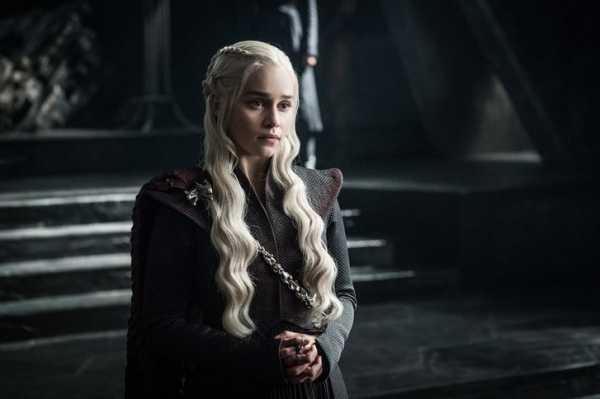
The “Game of Thrones” creators David Benioff and D. B. Weiss have said that Daenerys Targaryen is a blend of Napoleon, Joan of Arc, and Lawrence of Arabia.
Photograph by Helen Sloan / HBO
I went back to my life, but, while I was in the hospital, I was told that I had a smaller aneurysm on the other side of my brain, and it could “pop” at any time. The doctors said, though, that it was small and it was possible it would remain dormant and harmless indefinitely. We would just keep a careful watch. And recovery was hardly instant. There was still the pain to deal with, and morphine to keep it at bay. I told my bosses at “Thrones” about my condition, but I didn’t want it to be a subject of public discussion and dissection. The show must go on!
Even before we began filming Season 2, I was deeply unsure of myself. I was often so woozy, so weak, that I thought I was going to die. Staying at a hotel in London during a publicity tour, I vividly remember thinking, I can’t keep up or think or breathe, much less try to be charming. I sipped on morphine in between interviews. The pain was there, and the fatigue was like the worst exhaustion I’d ever experienced, multiplied by a million. And, let’s face it, I’m an actor. Vanity comes with the job. I spent way too much time thinking about how I looked. If all this weren’t enough, I seemed to whack my head every time I tried to get in a taxi.
Read: George R. R. Martin on his “Song of Ice and Fire” series.
The reaction to Season 1 was, of course, fantastic, though I had very little knowledge then of how the world kept score. When a friend called me exclaiming, “You’re No. 1 on IMDb!” I said, “What is IMDb?”
On the first day of shooting for Season 2, in Dubrovnik, I kept telling myself, “I am fine, I’m in my twenties, I’m fine.” I threw myself into the work. But, after that first day of filming, I barely made it back to the hotel before I collapsed of exhaustion.
On the set, I didn’t miss a beat, but I struggled. Season 2 would be my worst. I didn’t know what Daenerys was doing. If I am truly being honest, every minute of every day I thought I was going to die.
In 2013, after finishing Season 3, I took a job on Broadway, playing Holly Golightly. The rehearsals were wonderful, but it was clear pretty soon that it was not going to be a success. The whole thing lasted only a couple of months.
While I was still in New York for the play, with five days left on my SAG insurance, I went in for a brain scan—something I now had to do regularly. The growth on the other side of my brain had doubled in size, and the doctor said we should “take care of it.” I was promised a relatively simple operation, easier than last time. Not long after, I found myself in a fancy-pants private room at a Manhattan hospital. My parents were there. “See you in two hours,” my mum said, and off I went for surgery, another trip up the femoral artery to my brain. No problem.
Except there was. When they woke me, I was screaming in pain. The procedure had failed. I had a massive bleed and the doctors made it plain that my chances of surviving were precarious if they didn’t operate again. This time they needed to access my brain in the old-fashioned way—through my skull. And the operation had to happen immediately.
The recovery was even more painful than it had been after the first surgery. I looked as though I had been through a war more gruesome than any that Daenerys experienced. I emerged from the operation with a drain coming out of my head. Bits of my skull had been replaced by titanium. These days, you can’t see the scar that curves from my scalp to my ear, but I didn’t know at first that it wouldn’t be visible. And there was, above all, the constant worry about cognitive or sensory losses. Would it be concentration? Memory? Peripheral vision? Now I tell people that what it robbed me of is good taste in men. But, of course, none of this seemed remotely funny at the time.
I spent a month in the hospital again and, at certain points, I lost all hope. I couldn’t look anyone in the eye. There was terrible anxiety, panic attacks. I was raised never to say, “It’s not fair”; I was taught to remember that there is always someone who is worse off than you. But, going through this experience for the second time, all hope receded. I felt like a shell of myself. So much so that I now have a hard time remembering those dark days in much detail. My mind has blocked them out. But I do remember being convinced that I wasn’t going to live. And, what’s more, I was sure that the news of my illness would get out. And it did—for a fleeting moment. Six weeks after the surgery, the National Enquirer ran a short story. A reporter asked me about it and I denied it.
But now, after keeping quiet all these years, I’m telling you the truth in full. Please believe me: I know that I am hardly unique, hardly alone. Countless people have suffered far worse, and with nothing like the care I was so lucky to receive.
A few weeks after that second surgery, I went with a few other cast members to Comic-Con, in San Diego. The fans at Comic-Con are hardcore; you don’t want to disappoint them. There were several thousand people in the audience, and, right before we went on to answer questions, I was hit by a horrific headache. Back came that sickeningly familiar sense of fear. I thought, This is it. My time is up; I’ve cheated death twice and now he’s coming to claim me. As I stepped offstage, my publicist looked at me and asked what was wrong. I told her, but she said that a reporter from MTV was waiting for an interview. I figured, if I’m going to go, it might as well be on live television.
But I survived. I survived MTV and so much more. In the years since my second surgery I have healed beyond my most unreasonable hopes. I am now at a hundred per cent. Beyond my work as an actor, I’ve decided to throw myself into a charity I’ve helped develop in conjunction with partners in the U.K. and the U.S. It is called SameYou, and it aims to provide treatment for people recovering from brain injuries and stroke. I feel endless gratitude—to my mum and brother, to my doctors and nurses, to my friends. Every day, I miss my father, who died of cancer in 2016, and I can never thank him enough for holding my hand to the very end.
There is something gratifying, and beyond lucky, about coming to the end of “Thrones.” I’m so happy to be here to see the end of this story and the beginning of whatever comes next.
MORE FROM
Personal History
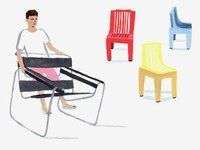
The Three Chairs That Define Childhood
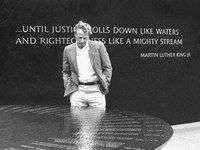
The Reckoning of Morris Dees and the Southern Poverty Law Center
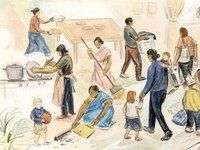
Women’s Work
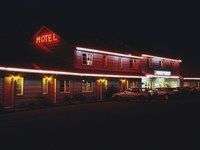
The “I Do” of Addiction

What “Peanuts” Taught Me About Queer Identity
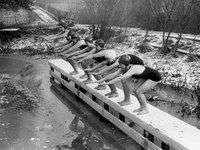
The Women Who Brave Winter Swimming at London’s Ladies’ Pond
Sourse: newyorker.com






